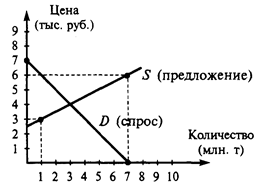Words pertaining to religion; words connected with learning.
orgel – organ; papa – pope; regol – religious rule;
15. Word meaning: the problem of definition, referential and functional approaches to meaning. Every word has two aspects: the outer aspect (its sound form) and the inner aspect (its meaning). Sound and meaning do not always constitute a constant unit even in the same language. E.g. the word «temple» may denote «a part of a human head» and «a large church» In such cases we have homonyms. One and the same word in different syntactical relations can develop different meanings. On the other hand, one and the same meaning can be expressed by different sound forms, e.g. «pilot», and «airman», «horror» and «terror». In such cases we have synonyms. Syntagmatics – linear (simultaneous) relationship of words in speech as distinct from associative (non-simultaneous) relationship of words in language. Paradigmatics – 1) associative (non-simultaneous) relationship of words in language as distinct from linear (simultaneous) relationship of words in speech (syntagmatics); relation of units in absentia (e.g. synonymic, antonymic relationships. Simple words consist of one root morpheme and an inflexion (in many cases the inflexion is zero), e.g. «seldom», «chairs», «longer», «asked». Derived words consist of one root morpheme, one or several affixes and an inlexion, e.g. «deristricted», «unemployed». Compound words consist of two or more root morphemes and an inflexion, e.g. «baby-moons», «wait-and-see (policy)». Compound-derived words consist of two or more root morphemes, one or more affixes and an inflexion, e.g. «middle-of-the-roaders», «job-hopper». When speaking about the structure of words stems also should be mentioned. The stem is the part of the word which remains unchanged throughout the paradigm of the word, e.g. the stem «hop» can be found in the words: «hop», «hops», «hopped», «hopping». So stems, the same as words, can be simple, derived, compound and compound-derived. Stems have not only the lexical meaning but also grammatical (part-of-speech) meaning, they can be noun stems («girl» in the adjective «girlish»), adjective stems («girlish» in the noun «girlishness»), verb stems («expell» in the noun «expellee») etc. Plato’s work: words are names or labels for things. Aristotle: the smallest significant unit of speech. Modern linguists: Referential approach (psychological). The model is the result of attempts to find relations between words and things. Symbol- word. Referent- thing. Reference- meaning. Sometimes it’s easy to understand the meaning of a words and it’s parts. S. Ullman distinguishes between transparent and opaque words. T. words are always motivated. O. words are conventional words. This distinguish goes back to the Greeks. Motivation is the relationship existing between the phonemes or morphemic composition ans structural pattern of a word on the one hand and it’s meaning oh the other hand. 3 types of M.: 1.phonetical; 2.morphological; 3.semantic When there use a certain similarity between the sounds of a word and the sounds referred to by the meaning of a word – phonetical. Morphological- it’s possible to guess the meaning of a word from it’s parts. (in newly coined words) Semantic motivation is based on the coexistence of direct and figurative meaning of the same word. Foot- a lower part of smth; part of a body. The foot of the mountain. Each word has a hard core of meaning, which stable, but can’t be modified by the context within certain limits. 2 types of context: linguistic (verbal); extralinguistic
|




